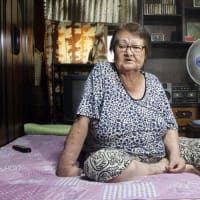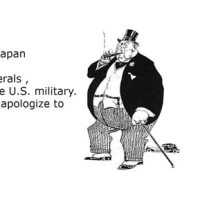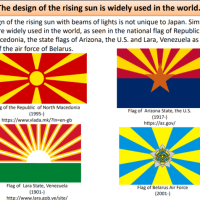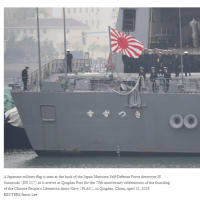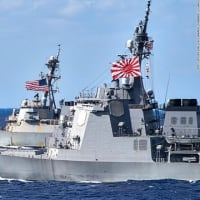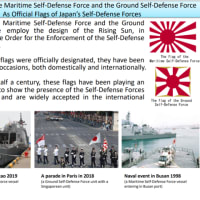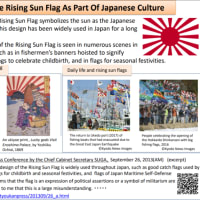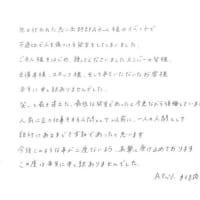‘Comfort women’ in South Korea who serviced U.S. forces seek justice
BY JEFF KINGSTON
SPECIAL TO THE JAPAN TIMES
Katherine Moon is wrong in advancing the claim that Japan was uniquely horrible
NO ORGANIZED OR FORCED RECRUITMENT:
MISCONCEPTIONS ABOUT COMFORT WOMEN
AND THE JAPANESE MILITARY
Hata Ikuhiko
Professor Emeritus, Nihon University
Korean nationalists have been demonizing Japan. Stop acting like them.
Start demanding Korea & U.S. that they should apologize and compensate to Sex Slaves they exploited.
Japan apologized and compensated.
U.S. and Korea should follow Japan's step.
BY JEFF KINGSTON
SPECIAL TO THE JAPAN TIMES
Moon, however, argues there are key distinctions, as “abuse of women’s bodies for forced or coerced sexual ‘service’ to men has occurred for millennia throughout various cultures, but Japan is the only country or state that had systematically developed an institution of forced sex as part of its military organization and operations.”
Katherine Moon is wrong in advancing the claim that Japan was uniquely horrible
NO ORGANIZED OR FORCED RECRUITMENT:
MISCONCEPTIONS ABOUT COMFORT WOMEN
AND THE JAPANESE MILITARY
Hata Ikuhiko
Professor Emeritus, Nihon University
Let us now turn our attention to sexual activity in battle zones where forces other than Japanese troops fought. For details, I refer readers to my book The Comfort Women and Sex in the Battle Zone.9
Here I will focus on the sexual behavior of American military personnel during the U.S. occupation of Japan, and during the Korean and Vietnam wars.
There is no dearth of reference material describing the American military’s use of Japanese 12 women as comfort women during the Occupation: Gifts from the Vanquished by Masayo Duus,10 Comfort Stations of the Occupation Forces by Inoue Setsuko,11 and police records kept by every prefecture in Japan, to name just a few sources. Suffice it to say that the RAA (Recreation and Amusement Association), under whose auspices prostitution facilities intended to protect young
women from good families from rape were established, was organized (by the Home Ministry) only three days after the Pacific War ended. The association’s Japanese name, which translates as “Special Comfort Facility Association,” is less euphemistic.
The first RAA brothel opened on August 27, 1945 in Komachien, Omori, Tokyo. More than 1,000 Japanese women responded to advertisements in Asahi Shimbun and other newspapers that read as follows: “Urgent notice: Seeking special female workers, good pay; clothing, food and housing provided; salary advances possible.” At first the women were required to service a minimum of 15 to a maximum of 60 American GIs per day. But when applications reached a peak (70,000 women), quotas were reduced. The women considered most successful rose to “only” status, meaning that they serviced only one GI.
The RAA brothels notwithstanding, rapes of Japanese women by American troops were interminable. But Japanese newspapers, forbidden to print anything about crimes committed by GIs, vented their frustration with descriptions like “the perpetrator was a tall man.”
When the Korean War broke out in 1950, the bulk of the troops stationed in Japan were mobilized to the Korean peninsula. Three years later, there was a ceasefire. But ever since then, American troops have been stationed in South Korea, and the South Korean government has been obliging them with prostitutes who congregate near American bases. The women are compelled to undergo medical checks and must carry a card that states they are free of venereal disease.
Some of the American commanders in chief have curbed prostitution, but in at least one case, a mutual aid society (an union-like organization formed by the prostitutes) went on strike, forcing the U.S. military to back down.
According to South Korean government reports, there were 330,000 prostitutes in that nation in 2002. Income from prostitution totaled US $20 billion, or 4.1% of GDP.12 The contribution of the U.S. military to this still flourishing “industry” has certainly not been a trivial one.
The South Korean military has its own prostitutes, of course. Women’s studies scholar Kim Ki-ok presented a report at an international symposium held at Ritsumeikan University (Kyoto) in February 2002. According to Yamashita Eiai, a member of the university’s faculty, Kim’s report had a considerable impact on Japanese feminists involved with the comfort women problem.13 In 1996, Kim tracked down houses of prostitution operated by the South Korean military.
However, she did not disclose her discovery at that time, fearing exploitation by Japanese rightists. Her report states that according to History of the Korean War behind the Front Line, compiled by South Korean Army Headquarters in 1956, military units were provided with stationary brothels that housed special prostitutes, who were referred to as “Type 5 supplies.” 13
Until March 1954, 89 comfort women worked in four of these brothels, servicing 245,160 soldiers per year. Other Koreans have written exposés of South Korea. Yi Myong-suk pointed out that Korean soldiers, who were so fearless during the Vietnam War, earned an unenviable reputation in Vietnam as murderers of Vietnamese civilians and procurers of women.
South Korea has yet to atone for its sins in Vietnam.14 Dealing with the 5,000-30,000 (depending on which report one reads) half-Korean, half-Vietnamese children left behind by its soldiers, has reportedly been a major headache for the South Korean government. But the major players in the Vietnam War were the American troops. Sexual services offered by Vietnamese women were immensely popular in Saigon (today Ho Chi Minh City).
Only the rare American account of the war or U.S. newspaper article offers anything but superficial coverage of this topic. Fortunately for us, in her book Against Our Will, Susan Brownmiller describes what she learned in an interview with journalist Peter Arnett (winner of a Pulitzer Prize) about a brothel used by the 1st Division, 3rd Brigade, stationed in Lai Khe, Vietnam. By 1966, official military brothels had been established within each division’s camp. Each one was a two-building “recreation area” where 60 Vietnamese women lived and worked. The prostitutes decorated their cubicles with nude photographs from Playboy magazine and had silicone injected into their breasts to make the American soldiers feel more at home. Sex in the brothels was “quick, straight and routine.”
The women serviced eight to 10 men per day at 500 piastres (about US $2.00) a trick. They received 200 piastres, the remainder going into the proprietors’ coffers. The women were recruited by province chiefs. Some of the money found its way to the mayor of Lai Khe. This system made it possible for the Americans to receive sex services at what they called “Disneylands” without dirtying their hands in the business aspect of the enterprise. Brigade commanders supervised the brothels; both Army Chief of Staff Gen. William C.Westmoreland and the Pentagon gave tacit approval to them. The prostitutes underwent weekly medical examinations by Army medics. Signs hung in front of the brothels claiming they were safe, but according to 1969 statistics, 200 of every 1,000 soldiers contracted venereal disease.15
The information in Against Our Will is important because its descriptions of the brothels in Vietnam mirror those patronized by Japanese soldiers. Therefore, reading it is more likely to convince the American congresspersons that they are wrong better than anything I could write. However, the women who serviced Japanese military personnel were better paid (by more than 50%). And silicone injections were not available to them. Toward the end of the Vietnam War, there were 300,000-500,000 prostitutes, according to Cynthia Enloe.16
Korean nationalists have been demonizing Japan. Stop acting like them.
Start demanding Korea & U.S. that they should apologize and compensate to Sex Slaves they exploited.
Japan apologized and compensated.
U.S. and Korea should follow Japan's step.











